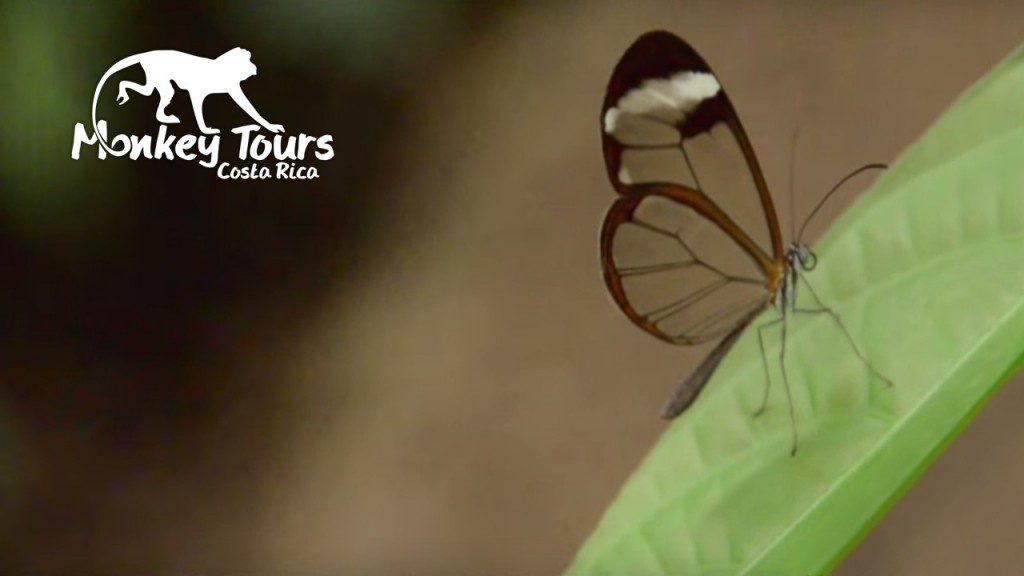Glasswinged Butterflies from Costa Rica
The Glasswinged Butterfly gets its name from its transparent wings. In Spanish, the Glass-winged Butterfly is known as “Espejitos,” which translates as “little mirrors.”
Distribution
Glasswinged Butterflies can be found from Mexico to Colombia, and are also found in parts of Florida on their long migrations. In Costa Rica, this butterfly can be found on both coasts and throughout the Central Valley Region. It lives in a wide range of habitats from gardens to open forest expanses, and in the tropical forests of the Atlantic and Pacific coasts.
Mating & Reproduction
Glasswinged Butterflies are somewhat toxic, because of the deadly nightshade flowers they ingest when they are caterpillars. The alkaloids from the nightshade help the Glasswinged Butterflies in deterring predators, and they also serve the males in attracting females. When the male wants to mate, it will release pheromones which are produced from the alkaloids. Along with the deadly nightshade, they also consume asters, daisies and sunflowers which add to their toxicity. This aids them in producing the pheromones, also.
These butterflies are a lekking species. This means that males congregate to compete for a partner and the chance to procreate. The mating process normally starts in the early afternoon and lasts well into the evening or night. The female will then find a deadly nightshade to deposit the eggs on, and the hatched caterpillars will feed on the toxic plant rendering their skin with a bright purple or red color. This coloring tells predators to beware attempting to make a snack of Glasswinged Butterflies from their youth and on into adulthood.
Behavior
Along with deadly nightshade, asters, daisies, sunflowers, dogbane and oleander, the Glasswinged Butterfly feeds on the excrement of insectivore birds. This provides the necessary proteins for the butterfly to carry out its many difficult functions such as the long migration it makes. Glasswingeds will travel as far as 12 kilometers in a day.
Miscellaneous Info
Despite its looks, the Glasswinged Butterfly is strong, fast and resilient. It can reach up to almost 13 km per hour in flight, and can carry up to forty times its weight. The diet of the Glasswinged Butterfly contributes to it toxic and predator discouraging qualities, and proves the adage, “whatever doesn’t kill you makes you stronger.”
Locations in Costa Rica: La Amistad International Park, Juan Castro Blanco National Park, Irazú Volcano National Park, Chirripó National Park, Rincón de la Vieja National Park, Monteverde Cloud Forest Reserve, Palo Verde National Park
Diet: bird excrement, plants
Migration Pattern: ongoing throughout the year in Central and Northwestern South America
Habitat: Rainforest Understory
Size: length=28-33 mm
Species: Greta oto
Related:

